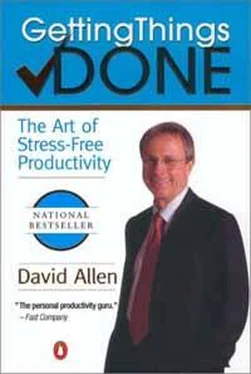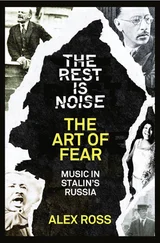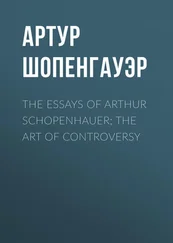In the last two chapters, I have covered the basic models of how to stay maximally productive and in control, with minimal effort, at the two most basic levels of our life and work: the actions we take and the projects we enter into that generate many of those actions.
You need no new skills to increase your productivity-just a new set of behaviors about when and where to apply them.
The fundamentals remain true—you must be responsible for collecting all your open loops, applying a front-end thought process to each of them, and managing the results with organization, review, and action.
For all those situations that you have any level-of commitment to complete, there is a natural planning process that goes on to get you from here to there. Leveraging that five-phase model can often make the evolution easier, faster, and more productive.
These models are simple to understand and easy to implement. Applying them creates remarkable results. You need essentially no new skills—you already know how to write things down, clarify outcomes, decide next actions, put things into categories, review it all, and make intuitive choices. Right now you have the ability to focus on successful results, brainstorm, organize your thinking, and get moving on your next steps.
But just knowing how to do all of those things does not produce results. Merely having the ability to be highly productive, relaxed, and in control doesn't make you that way. If you're like most people, you can use a coach—someone to walk you step by step through the experience and provide some guideposts and handy tricks along the way, until your new operational style is elegantly embedded.
You'll find that in part 2.
Part 2. Practicing Stress-Free Productivity
4. Getting Started: Setting Up the Time, Space, and Tools
IN PART 2 we'll move from a conceptual framework and limited application of workflow mastery to full-scale implementation and best practices. Going through this program often gives people a level of relaxed control they may never have experienced before, but it usually requires the catalyst of step-by-step procedures to get there. To that end, I'll provide a logical sequence of things to do, to make it as easy as possible for you to get on board and glean the most value from these techniques.
Implementation—Whether Ail-Out or Casual—Is a Lot About "Tricks"
If you're not sure you're committed to an all-out implementation of these methods, let me assure you that a lot of the value people get from this material is good "tricks." Sometimes just one good trick can make it worthwhile to range through this information: I've had people tell me, for example, that the best thing they got from my two-day seminar was advice on setting up and using a tickler file. Tricks are for the not-so-smart, not-so-conscious part of us. To a great degree, the highest-performing people I know are those who have installed the best tricks in their lives. I know that's true of me. The smart part of us sets up things for us to do that the not-so-smart part responds to almost automatically, creating behavior that produces high-performance results. We trick our-selves into doing what we ought to be doing.
It is easier to act yourself into a better way of feeling than to feel yourself into a better way of action.
— O. H. Mowrer
For instance, if you're a semiregular exerciser like me, you probably have your own little tricks to get you to exercise. My best trick is costume —the clothing I put on or take off. If I put on exercise gear, I'll start to feel like exercising; if I don't, I'm very likely to feel like doing something else. Let's look at an example of a real productivity trick. You've probably taken work home that you had to bring back the next day, right? It was mission-critical that you not forget it the next morning. So where did you put it the night before? Did you put it in front of the door, or on your keys, so you'd be sure to take it with you? For this you got a higher education? What a sophisticated piece of self-management technology you've installed in your life! But actually that's just what it is. The smart part of you the night before knows that the not-so-smart part of you first thing in the morning may barely be conscious. "What's this in front of the door!? Oh, that's right, I've got to take this with me!" What a class act. But really, it is. It's a trick I call Put It in Front of the Door. For our purposes the "door" is going to be the door of your mind, not your house. But it's the same idea.
If you were to take out your calendar right now and look closely at every single item for the next fourteen days, you'd probably come up with at least one "Oh-that-reminds-me-I-need-to_____________ ." If you then captured that value-added thought into some place that would trigger you to act, you'd feel better already, have a clearer head, and get more positive things done. It's not rocket science, just a good trick.
You increase your productivity and creativity exponentially when you think about the right things at the right time and have the tools to capture your value-added thinking.
If you take out a clean sheet of paper right now, along with your favorite writing instrument, and for three minutes focus solely on the most awesome project on your mind, I guarantee you'll have at least one "Oh, yeah, I need to consider __ ." Then capture what shows up in your head on the piece of paper and put it where you might actually use the idea or information. You won't be one ounce smarter than you were ten minutes ago, but you'll have added value to your work and life.
Much of learning how to manage workflow in a "black belt" way is about laying out the gear and practicing the moves so that the requisite thinking happens more automatically and it's a lot easier to get engaged in the game. The suggestions that follow about getting time, space, and tools in place are all trusted methods for making things happen at a terrific new level.
If you're sincere about making a major leap forward in your personal management systems, I recommend that you pay close attention to the details and follow through on the suggestions provided below in their entirety. The whole will be greater than the sum of the parts. You'll also discover that the execution of this program will produce real progress on real things that are going on in your life right now. We'll get lots done that you want to get done, in new and efficient ways that may amaze you.
Setting Aside the Time
I recommend that you create a block of time to initialize this process and prepare a workstation with the appropriate space, furniture, and tools. If your space is properly set up and streamlined, it can reduce your unconscious resistance to dealing with your stuff and even make it attractive for you to sit down and crank through your input and your work. An ideal time frame for most people is two whole days, back to back. (Don't be put off by that if you don't have that long to spend, though: doing any of the activities I suggest will be useful, no matter how much or how little time you devote to them. Two days are not required to benefit from these techniques and principles—they will start to pay off almost instantly.) Implementing the full collection process can take up to six hours or more, and processing and deciding on actions for all the input you'll want to externalize and capture into your system can easily take another eight hours. Of course you can also collect and process your stuff in chunks, but it'll be much easier if you can tackle that front-end portion in one fell swoop.
The ideal time for me to work with a professional is on a weekend or holiday because the chance of outside disturbance is minimal then. If I work with someone on a typical workday, we first make sure that no meetings are scheduled and only emergency interruptions are allowed; phone calls are routed to voice-mail, or logged by secretaries for review and handling during a break. I don't recommend using "after hours" for this work. It usu ally means seriously reduced horsepower and a big tendency to get caught up in "rabbit trails." [4] After hours is actually a good time to crank through a group of similar tasks that you wouldn't normally do in the course of your typical workday, like filing a big backlog of papers, organizing photographs, surfing the Web about your upcoming vacation location, or processing expense receipts.
Читать дальше











